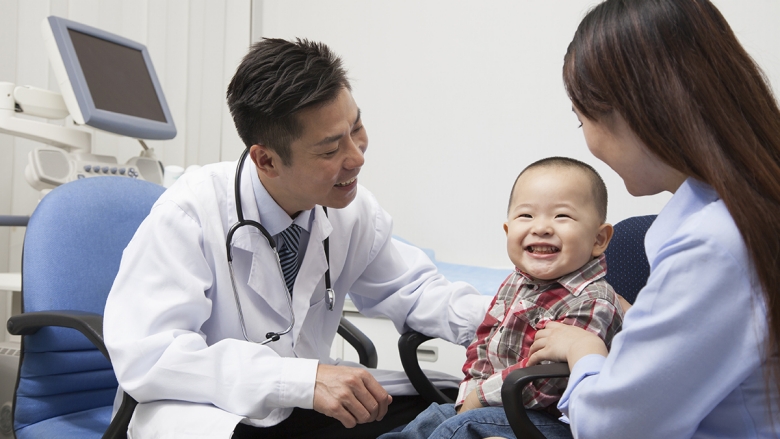
After drastically prolonging people's lives, and slashing infant and maternal mortality rates, China is poised to become healthier as it is building a moderately prosperous society in all respects.
The goal was crystallized as the Healthy China strategy in the 13th Five-Year Plan proposal (2016-2020). Enlisting the backing of the central leadership, the goal of Healthy China looks more than achievable.
Nothing is more telling of China's progress in the health sector than the sweeping improvement in three main public health indicators.
Average life expectancy in China surged from 35 during the early years of the People's Republic of China which was founded in 1949, to over 76 in 2015.
The infant mortality rate dropped from 20 percent right after the PRC was founded to 0.81 percent last year, while the maternal mortality rate dropped from 1,500 of every 100,000 in 1949 to about 20 of every 100,000 in 2015, according to statistics released by the National Health and Family Planning Commission (NHFPC).
Li Bin, head of the NHFPC, attributed the success to government commitment and leadership in protecting and promoting the health of the general public.
The government has mobilized all departments and social forces in implementing their duties, borrowing state-of-the-art concepts and techniques from abroad, Li added.
GROWING ATTENTION
Chinese President Xi Jinping has underscored the significance of Healthy China on different occasions over the past years.
In the face of an outbreak of H7N9 avian flu in 2013, Xi called for efforts to conduct epidemiological studies of the disease, strictly control infection sources, promote public awareness of disease prevention and accelerate the development of vaccines.
During an inspection tour in eastern Jiangsu Province in December 2014, Xi said that there would be no all-round well-being without health for all the people.
In addition, the central leadership has attached great importance to food safety. During a tour of north China's Inner Mongolia Autonomous Region in January 2014, Xi asked food enterprises to produce high quality products to ensure food safety for all the people.
While meeting the World Health Organization (WHO) director-general Margaret Chan in July, Xi said that enabling all Chinese people to access quality medical and health services is a significant part of China's Two Centennial Goals -- to build an all-round moderately prosperous society by 2020 and to build a modern socialist country by the middle of the 21st century.
DEEPENING HEALTH REFORM
The country is still held back by structural problems in its medical system, such as lack of affordability and other issues that put stress on the country's public hospitals.
China launched a new round of medical reforms in 2009. The reforms have navigated uncharted waters, and there are many more complicated challenges ahead.
However, the current leadership has faced challenges head on. The Communist Party of China (CPC) Central Committee plans to comprehensively deepen reform in order to address deep-rooted structural problems and systematic constraints.
In April 2015, the 11th meeting of the Central Leading Group for Deepening Overall Reform endorsed new guidelines on public hospital reform.
According to the guidelines, public hospitals should operate for the public good instead of for profit.
China launched pilot medical reforms in public hospitals in 17 cities in 2010, and the guidelines stipulate the reforms should cover all public hospitals by 2017.
In December 2015, the 19th meeting of the Central Leading Group for Deepening Overall Reform adopted a document to merge China's two medical insurance schemes for urban and rural residents in a bid to guarantee equal access to basic healthcare.
China has three separate medical insurance schemes -- basic medical insurance for urban employees, the new rural cooperative medical scheme, and basic medical insurance for city dwellers not covered by the first two schemes, mainly the underage and unemployed.
In March 2016, the 22nd meeting of the Central Leading Group for Deepening Overall Reform approved a document on strengthening child health care.
The document said the number of medical personnel should increase and their service quality should be enhanced to address shortages in child healthcare resources.
In April, the 23rd meeting of the Central Leading Group for Deepening Overall Reform approved guidelines on the promotion of family doctors. It was agreed that establishing such a system would move more medical resources to grassroots levels and help achieve the goal of providing basic health services for everyone.
The elderly, patients with chronic diseases and mental health illnesses, expectant mothers, children and the disabled will be among the first to have their own contracted family doctors, according to the meeting.
Health is not solely determined by medical care capacity, but also involves lifestyle, the environment and many other issues, Li Bin said, adding that as the CPC Central Committee underscores Healthy China as a national strategy, the health of over 1.3 billion Chinese will be better guaranteed with better systems and improved public services.
http://news.xinhuanet.com/english/2016-08/20/c_135618509.htm
Click Here For More Articles

No comments:
Post a Comment